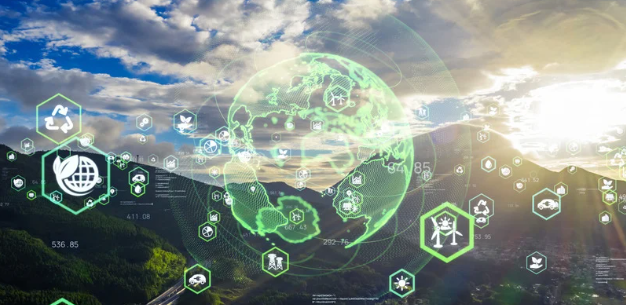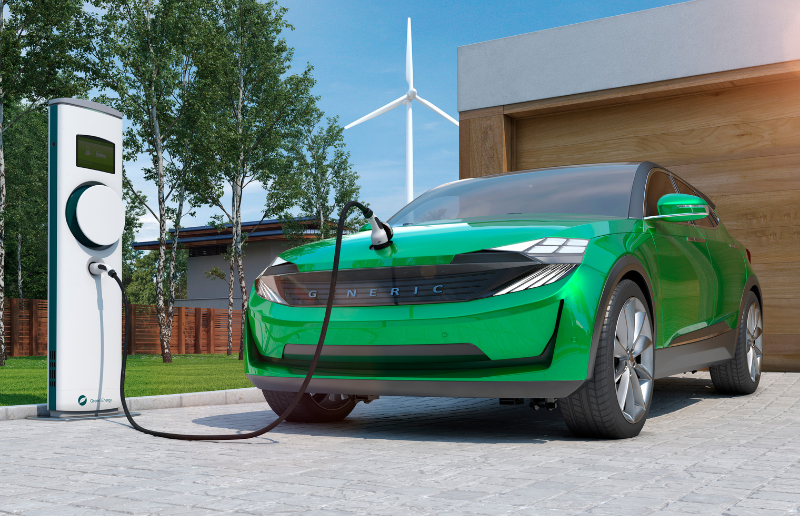
Technology has undeniably had a negative impact on the environment, contributing to climate change and resource scarcity. However, there is a paradoxical solution known as Environmental Technology that has the potential to save our planet from the harm caused by technology itself. This article will explore the negative impact of technology, the concept of Environmental Technology, and specific examples of how it can mitigate environmental consequences.
Contents
The Impact of Technology on the Environment
The industrial revolution and subsequent technological advancements have led to immense power and progress. Unfortunately, they have also contributed to pollution and the depletion of natural resources. Air and water pollution are two significant consequences of technology.
Air pollution, caused by the burning of fossil fuels, factories, power stations, and vehicles, leads to negative health impacts and global warming. Water pollution, on the other hand, is the contamination of water bodies due to human activities such as domestic waste and industrial effluents.
Moreover, technology has resulted in the depletion of natural resources, including aquifer depletion, deforestation, mining, and overconsumption. These activities have led to resource scarcity and the destruction of ecosystems.
What is Environmental Technology?
Environmental Technology is the development of new technologies aimed at conserving, monitoring, and reducing the negative impact of technology on the environment. It has gained prominence due to increased global concern for climate change and the need for a more sustainable, low-carbon economy.
Renewable energy, smart technology, electric vehicles, and carbon dioxide removal are some examples of environmental technology. Renewable energy, such as solar and wind power, harnesses naturally occurring resources to generate clean energy. Smart technology, through the Internet of Things (IoT), promotes energy efficiency and sustainable practices. Electric vehicles mitigate air pollution and greenhouse gas emissions. Carbon dioxide removal technologies, such as Direct Air Capture (DAC), extract carbon dioxide from the atmosphere, aiding in climate change mitigation.
Environmental Technology in Action

Renewable energy has emerged as a leading environmental technology. Solar panels, wind turbines, and other renewable energy sources now produce more than 20% of the UK’s electricity. Government investments and falling costs are driving the growth of renewable energy worldwide.
Smart technology, enabled by increased connectivity and the Internet of Things (IoT), promotes energy efficiency in homes and cities. It allows for optimized resource usage, reducing waste and pollution. Electric vehicles, propelled by electric motors and rechargeable batteries, offer emission-free transportation and contribute to a greener society.
Direct Air Capture (DAC) technology aims to remove carbon dioxide directly from the atmosphere. While still in the early stages of development, DAC has the potential to manage emissions from distributed sources, such as vehicle exhaust fumes. However, the high cost of DAC remains a challenge for large-scale implementation.
Edinburgh Sensors: Advancing Environmental Technology

Sensors play a crucial role in monitoring and reducing harmful activities, making them a vital part of environmental technology. Edinburgh Sensors specializes in gas sensing technology, offering solutions for greenhouse gas emissions monitoring, methane detection, and gas detection using UAV drones.
By providing accurate and reliable measurements of gases such as CO, CO2, and CH4, Edinburgh Sensors contributes to efforts in mitigating environmental concerns. Their gas sensing technology finds applications in pollution monitoring, agricultural research, and chemical processes, among others.
Conclusion
Despite the negative impact of technology on the environment, the rise of Environmental Technology brings hope for a sustainable future. Through renewable energy, smart technology, electric vehicles, and carbon dioxide removal, we can mitigate environmental harm and work towards a greener and more resilient planet.
Environmental Technology provides the tools and solutions we need to combat climate change and preserve our natural resources. By harnessing the power of technology in a responsible and sustainable manner, we can steer our world towards a brighter future.
FAQs
Q: What is Environmental Technology?
A: Environmental Technology, also known as ‘green’ or ‘clean’ technology, refers to the development of new technologies that aim to conserve, monitor, or reduce the negative impact of technology on the environment and resource consumption.
Q: How does renewable energy contribute to Environmental Technology?
A: Renewable energy harnesses naturally replenished resources such as sunlight, wind, and water to generate clean energy. It reduces dependence on fossil fuels and mitigates harmful emissions, making it a significant component of Environmental Technology.
Q: What is the role of sensors in Environmental Technology?
A: Sensors play a crucial role in monitoring and reducing harmful activities. In the context of Environmental Technology, gas sensing technology, like the one developed by Edinburgh Sensors, helps in monitoring greenhouse gas emissions, detecting methane, and identifying harmful gases using UAV drones.
Q: How can Environmental Technology help with climate change mitigation?
A: Environmental Technology offers solutions for reducing greenhouse gas emissions, promoting energy efficiency, and developing clean alternatives to traditional technologies. By embracing these advancements, we can mitigate climate change and work towards a low-carbon economy.
Q: How can I contribute to environmental preservation?
A: You can contribute by adopting sustainable practices, supporting renewable energy initiatives, utilizing energy-efficient technologies, reducing waste, and staying informed about the latest developments in Environmental Technology.
Note: This article has been written in collaboration with Virtual Tech Vision, a leading provider of technology news and analysis. Learn more about Virtual Tech Vision here.







